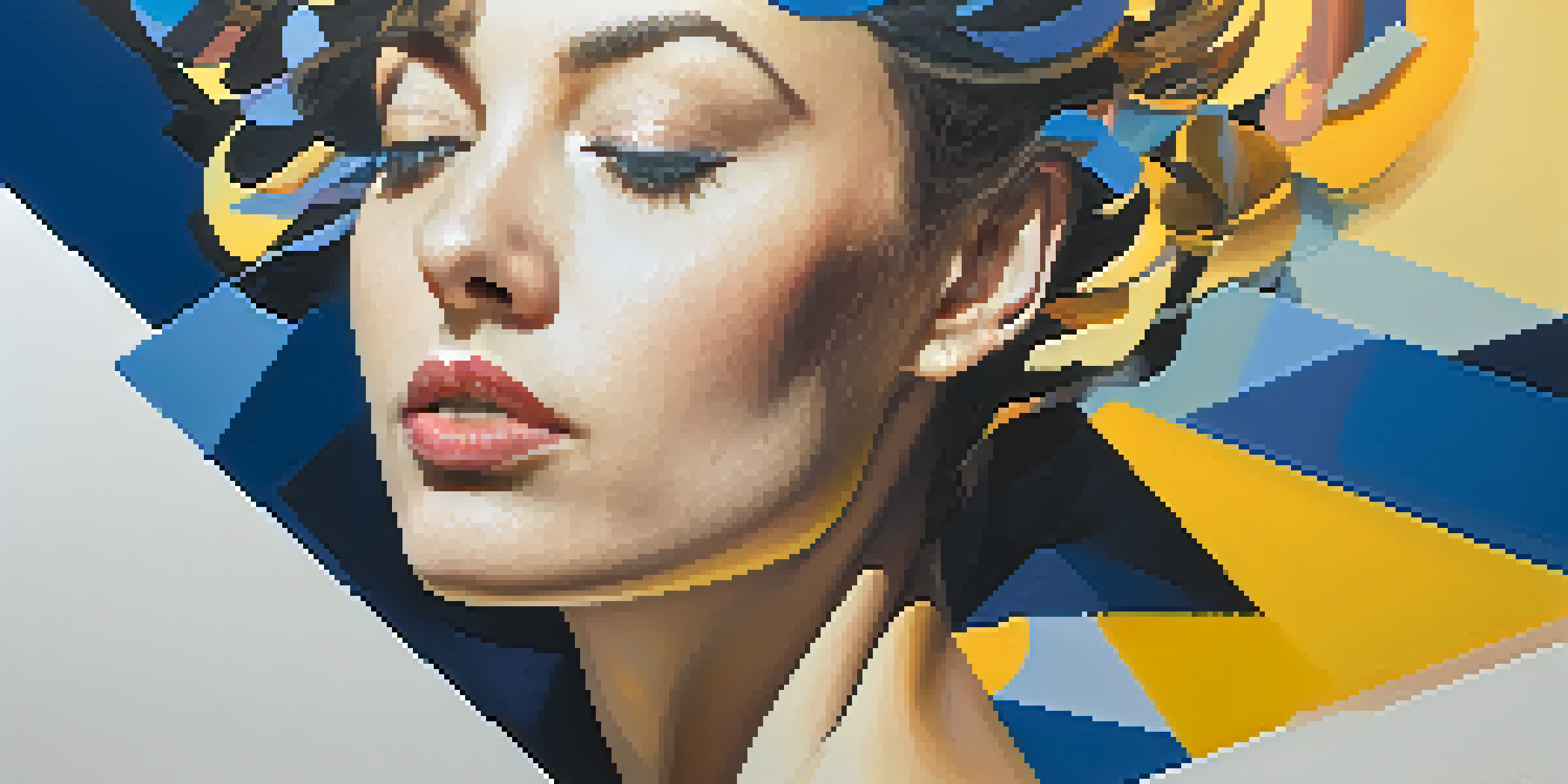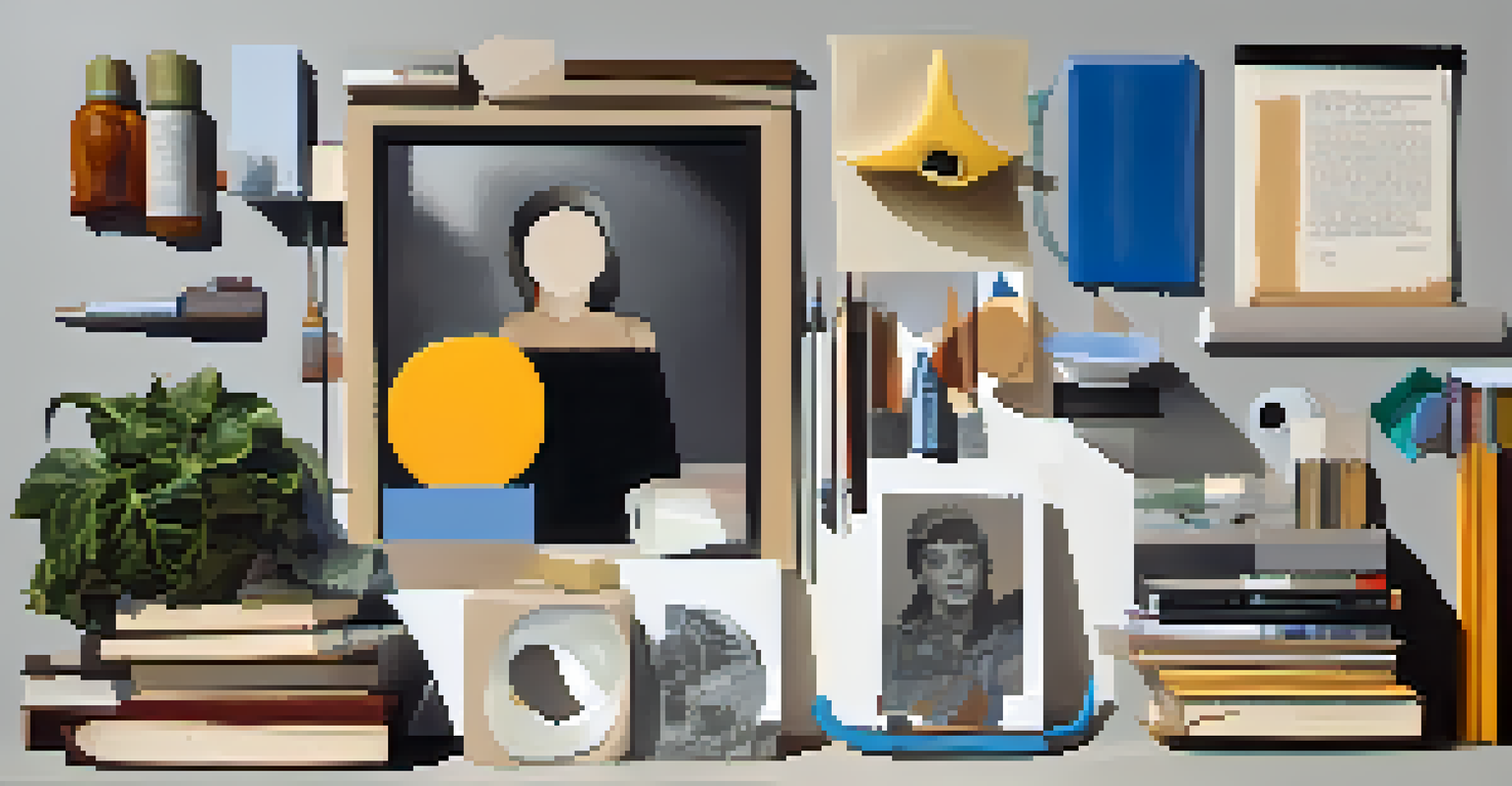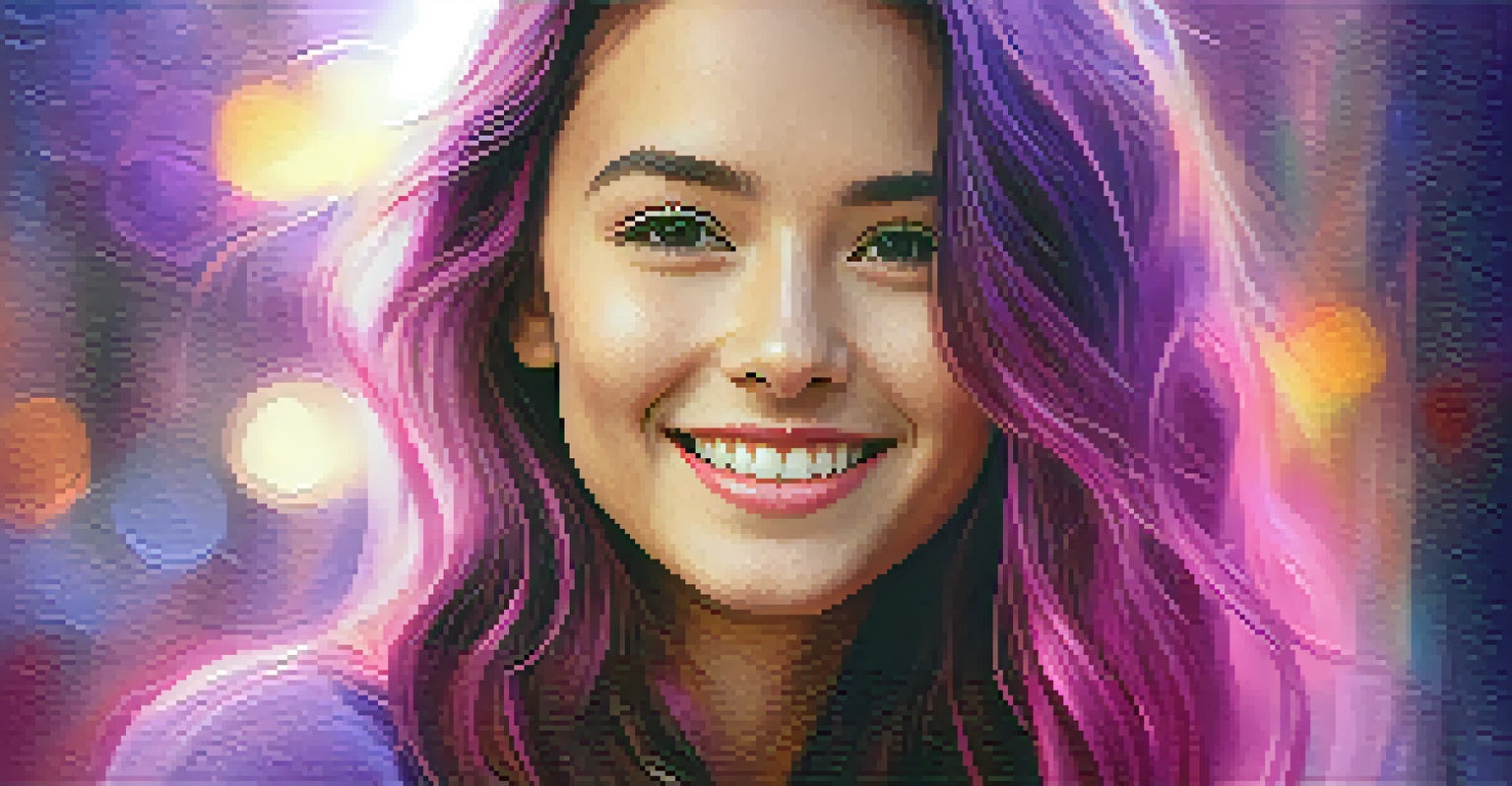Modern Portraits: Abstract and Conceptual Approaches Explored

Understanding Modern Portraiture: A New Perspective
Modern portraiture has evolved beyond the traditional confines of realism. It invites artists to explore identity, emotion, and society through abstract and conceptual lenses. This shift allows for a broader interpretation of what a portrait can encapsulate, pushing the boundaries of conventional art forms.
Art is not what you see, but what you make others see.
In this new realm, artists utilize various techniques and materials to convey deeper meanings. For instance, the use of bold colors and distorted shapes can evoke specific feelings or thoughts, moving the viewer to engage with the work on a more emotive level. This approach encourages us to question our understanding of portraiture.
Ultimately, modern portraiture reflects the complexities of contemporary life, making it a significant medium for self-expression and societal commentary. As we navigate through this article, we will delve into different approaches that challenge and redefine the concept of a portrait.
The Abstract Portrait: Breaking Down Traditional Forms
Abstract portraits strip away the literal representation of the subject, focusing instead on colors, shapes, and forms. This style allows artists to express their interpretations of a person’s essence rather than their physical appearance. For example, an abstract portrait might emphasize a subject's emotional state through swirling colors or fragmented shapes.

By removing the recognizable features, abstract portraiture invites viewers to engage with the artwork on an intellectual and emotional level. It encourages personal interpretation, as each observer may perceive different meanings based on their experiences. This engagement transforms the viewing process into a more interactive dialogue.
Modern Portraiture Redefines Identity
Artists are exploring identity and emotion through abstract and conceptual approaches, moving beyond traditional realism.
In doing so, abstract portraits often resonate with audiences more powerfully than traditional representations. They challenge viewers to rethink their perceptions of identity and personhood, paving the way for a deeper appreciation of the subject’s complexity.
Conceptual Portraits: Ideas Over Images
Conceptual portraits prioritize ideas and concepts rather than mere visual representation. This style often incorporates symbolism, metaphor, and narratives that provoke thought and discussion. For instance, an artist might create a portrait using everyday objects that reflect the subject's life experiences or beliefs.
The job of the artist is to always deepen the mystery.
By focusing on the concept behind the portrait, artists can address broader themes such as culture, politics, and social issues. This approach not only portrays the individual but also situates them within a larger context, making statements that resonate with contemporary audiences. It serves as a reminder that every person’s story is interconnected.
Through conceptual portraits, viewers are encouraged to explore deeper meanings and engage with the narratives presented. This method can lead to profound reflections on identity and the human experience, ultimately enriching the understanding of both the subject and the artist’s vision.
Techniques in Modern Abstract Portraiture
Artists employ a variety of techniques to create modern abstract portraits, including layering, collage, and mixed media. Layering involves building up textures and colors to create depth, while collage incorporates different materials to add richness to the portrait. These techniques allow for a dynamic interplay of elements that can evoke various feelings.
For example, an artist might use torn paper alongside bold brush strokes to create a striking contrast that draws the viewer in. This combination of techniques not only enhances the visual appeal but also deepens the emotional impact of the work. Each brushstroke or collage piece tells part of the story.
Techniques Enhance Emotional Depth
Innovative techniques like layering and collage empower artists to communicate complex ideas and evoke strong feelings in modern abstract portraits.
Ultimately, these innovative techniques empower artists to communicate complex ideas and emotions in compelling ways. By experimenting with different approaches, they can capture the essence of their subjects, inviting viewers to explore the layers of meaning within each portrait.
Famous Artists Shaping Modern Portraiture
Many contemporary artists are redefining portraiture through their unique approaches. For instance, Kehinde Wiley is known for his vibrant, larger-than-life portraits that challenge traditional representations of race and identity. His work often features subjects posed in classical styles, set against ornate backgrounds, creating a powerful dialogue about culture and representation.
Similarly, artists like Jenny Holzer use text in their conceptual portraits to convey messages that resonate with social and political themes. By integrating language into their work, they invite viewers to engage with the subject matter in a thought-provoking way. This blend of visual art and text creates a multifaceted experience for the audience.
These artists, among many others, are not just creating portraits; they are crafting narratives that reflect and challenge societal norms. Their contributions are pivotal in transforming the landscape of modern portraiture, opening doors for future explorations in this ever-evolving art form.
The Role of Technology in Modern Portraiture
Technology plays a significant role in shaping modern portraiture, providing artists with new tools and platforms for expression. Digital art, for instance, allows for innovative techniques that blend traditional methods with modern technology. Artists can manipulate images, experiment with colors, and even create interactive pieces that engage viewers in unique ways.
Moreover, social media platforms have become vital spaces for artists to showcase their work and connect with audiences. This accessibility allows for a diverse range of styles and voices to emerge, reflecting the multiplicity of contemporary experiences. Artists can share their creative processes, inviting viewers into their world and fostering a sense of community.
Technology Shapes Artistic Expression
The integration of digital tools and platforms is transforming modern portraiture, allowing for new forms of engagement and creativity.
As technology continues to evolve, it opens up endless possibilities for artistic expression. The integration of digital tools not only enhances the creative process but also transforms how we perceive and experience portraiture in the modern age.
The Future of Modern Portraits: Trends to Watch
The future of modern portraiture is likely to be marked by a continued exploration of identity and representation. As society evolves, so too will the themes that resonate with artists and their audiences. Expect to see an increased focus on inclusivity and diversity, as artists strive to represent a broader spectrum of human experience through their work.
In addition, the integration of technology will continue to shape artistic practices and audience engagement. Artists may experiment with augmented reality or virtual reality to create immersive experiences that redefine how we interact with portraits. This blend of art and technology promises to push the boundaries of creativity even further.

As we look ahead, it’s clear that modern portraiture will remain a dynamic and evolving field. By embracing change and innovation, artists will continue to challenge our perceptions and invite us to engage with the complexities of identity and humanity.